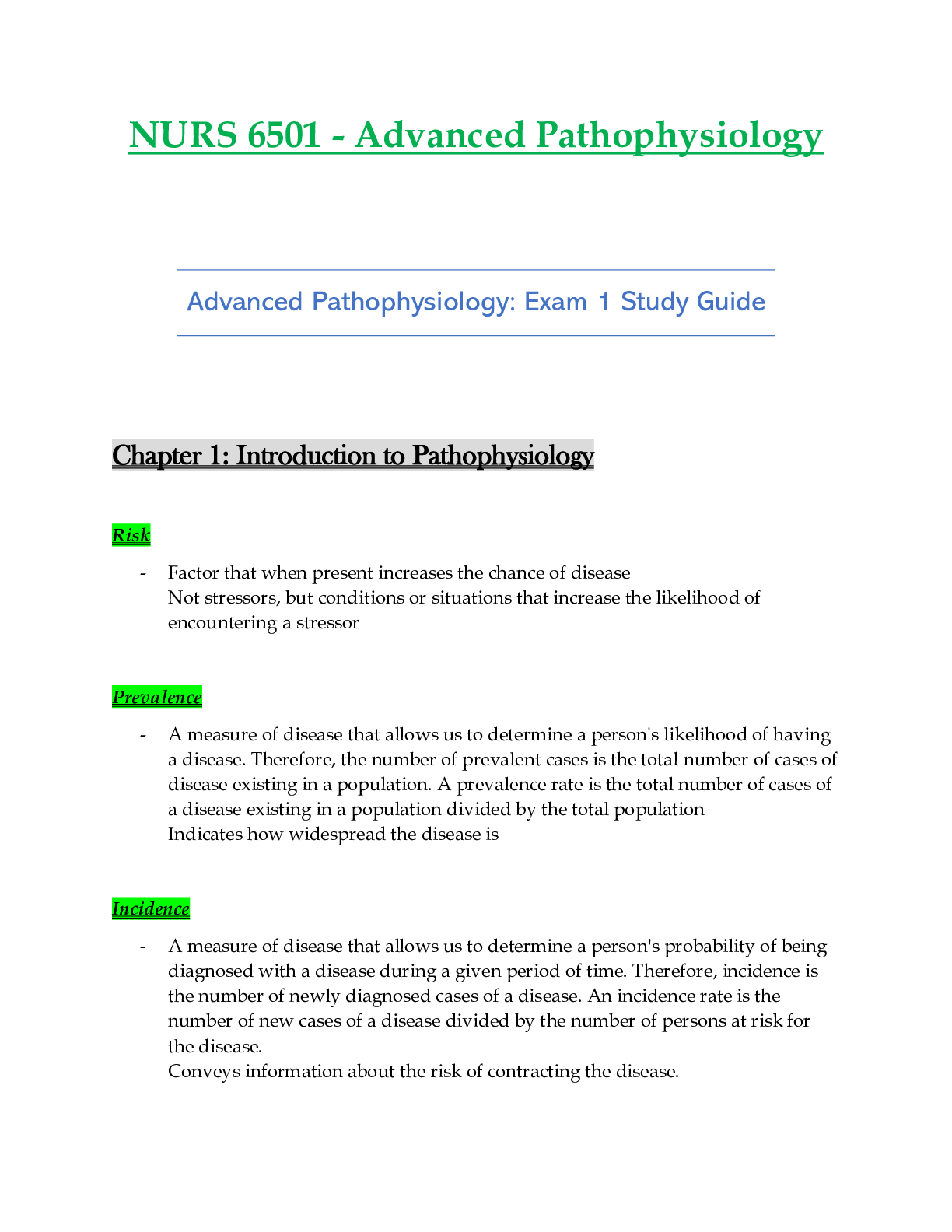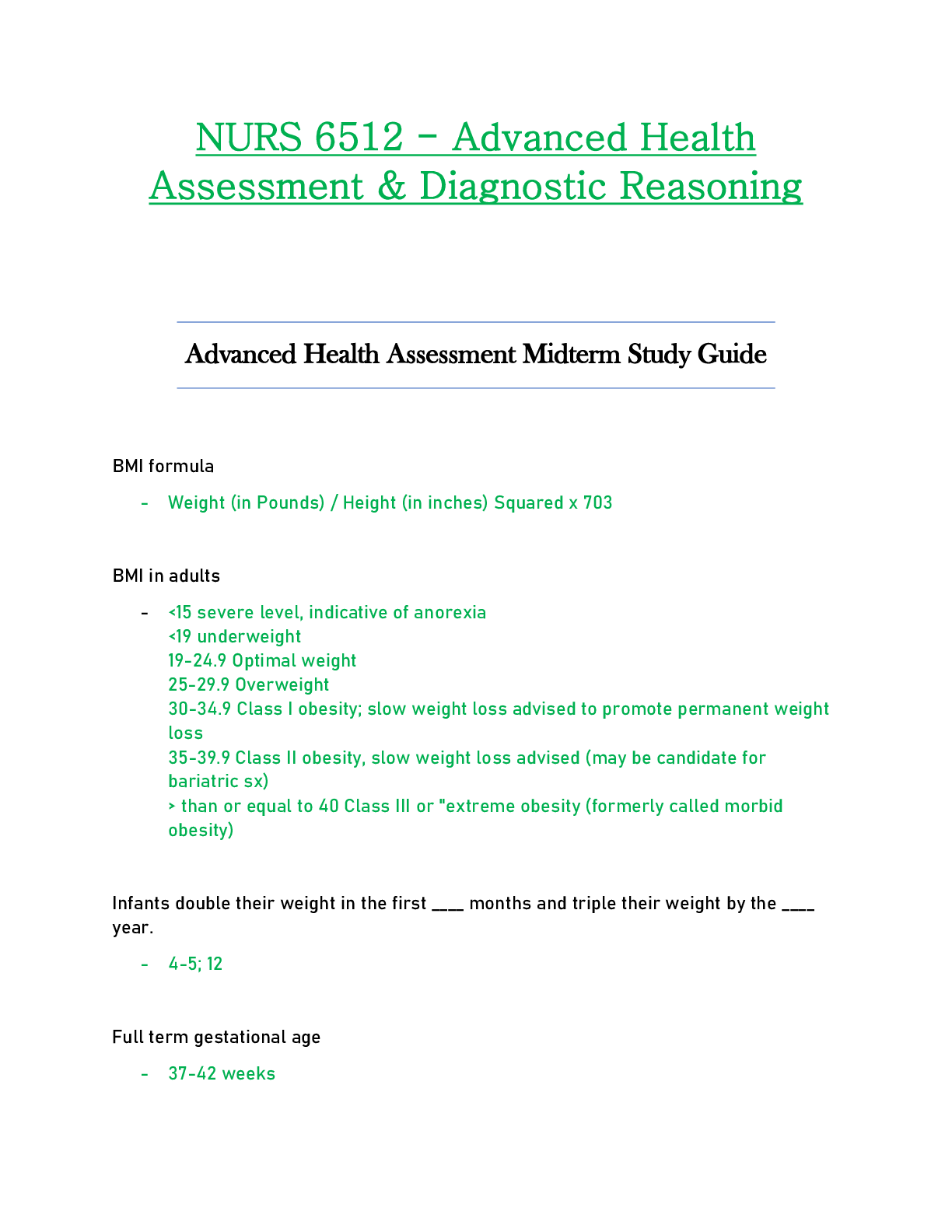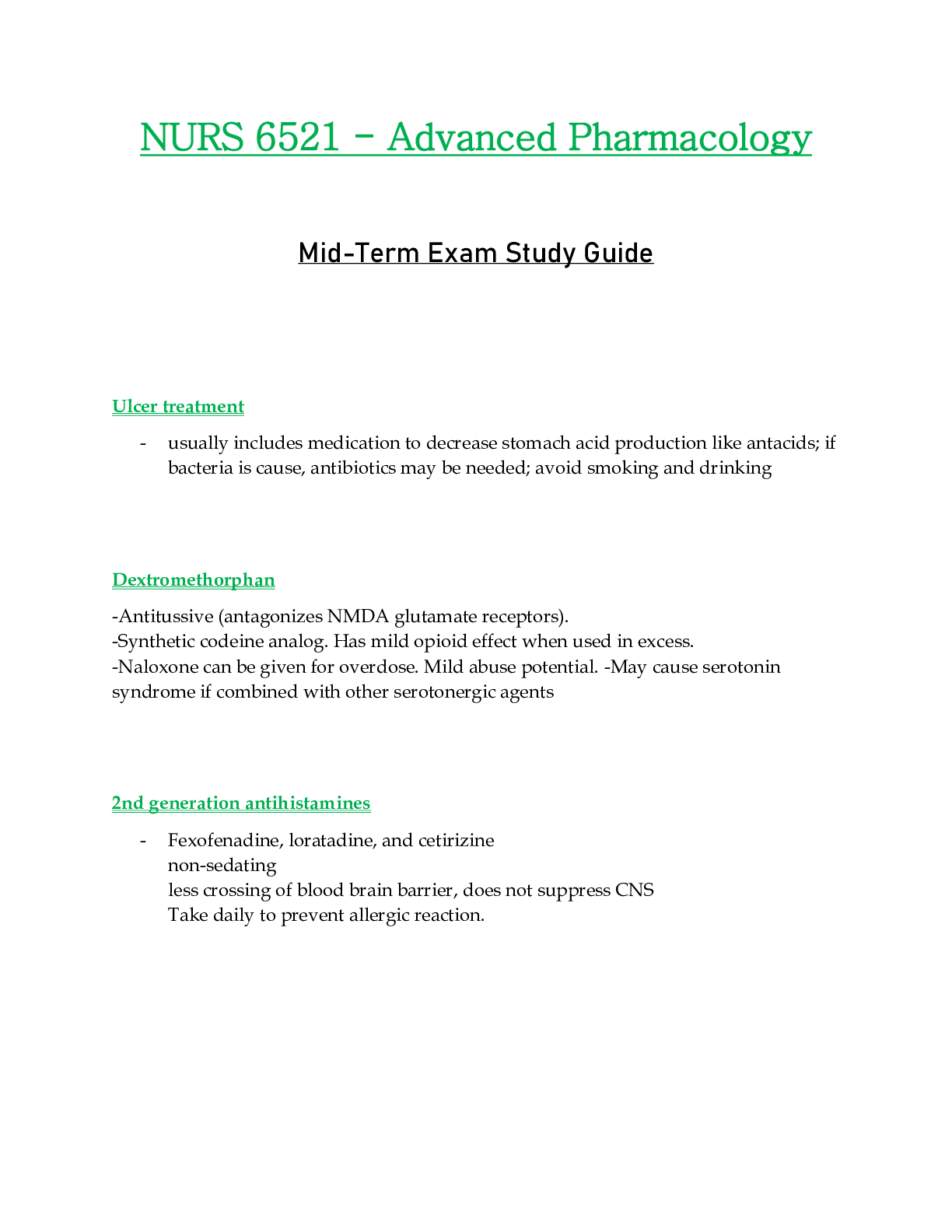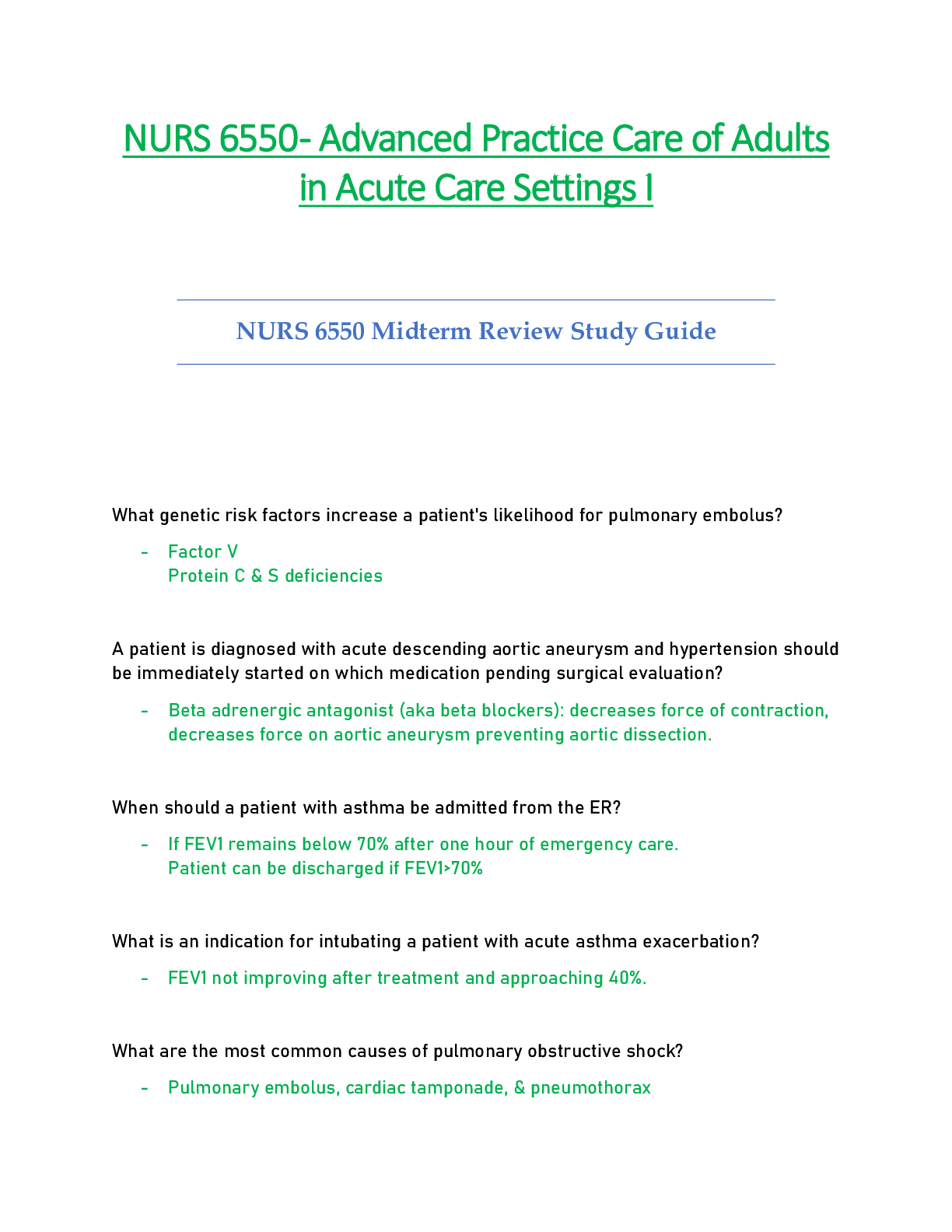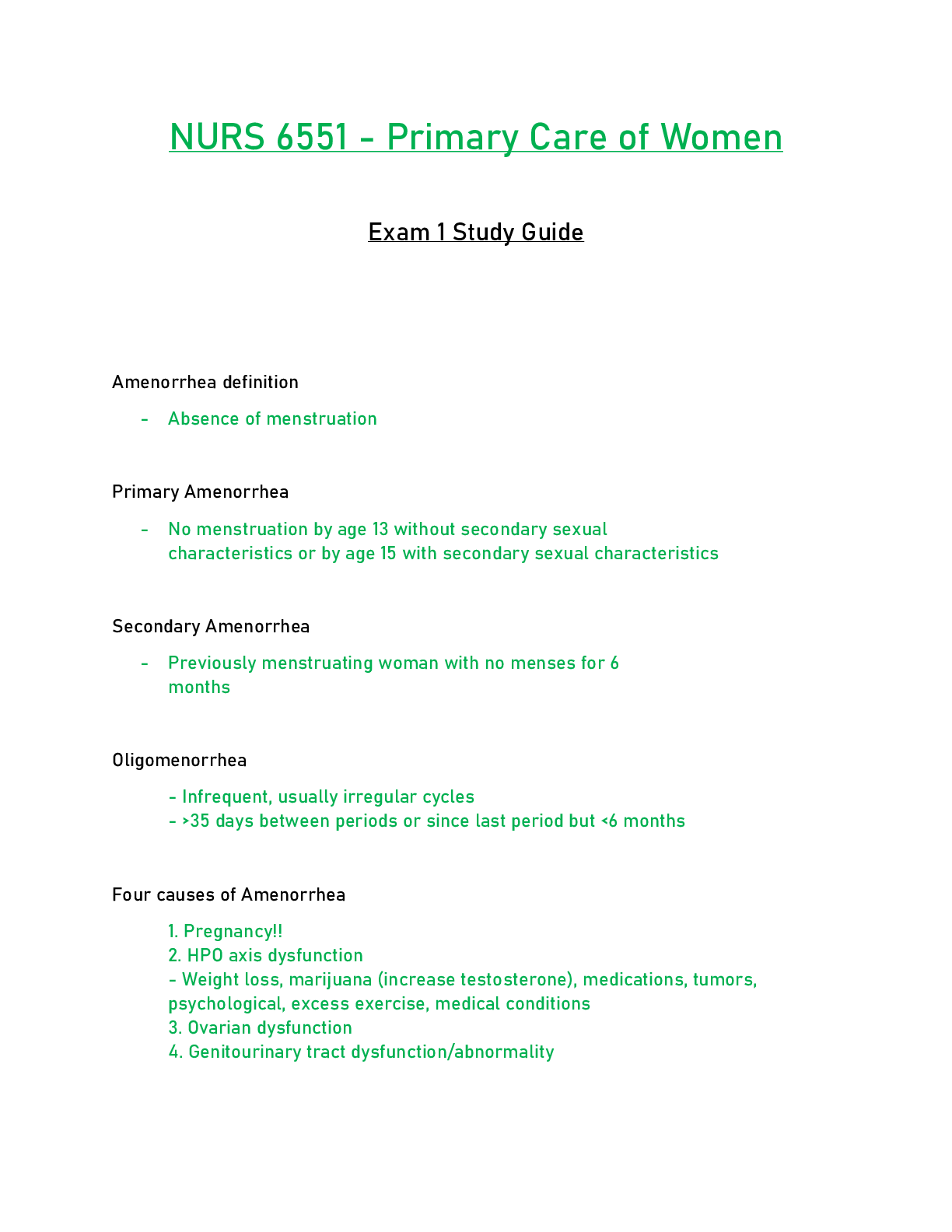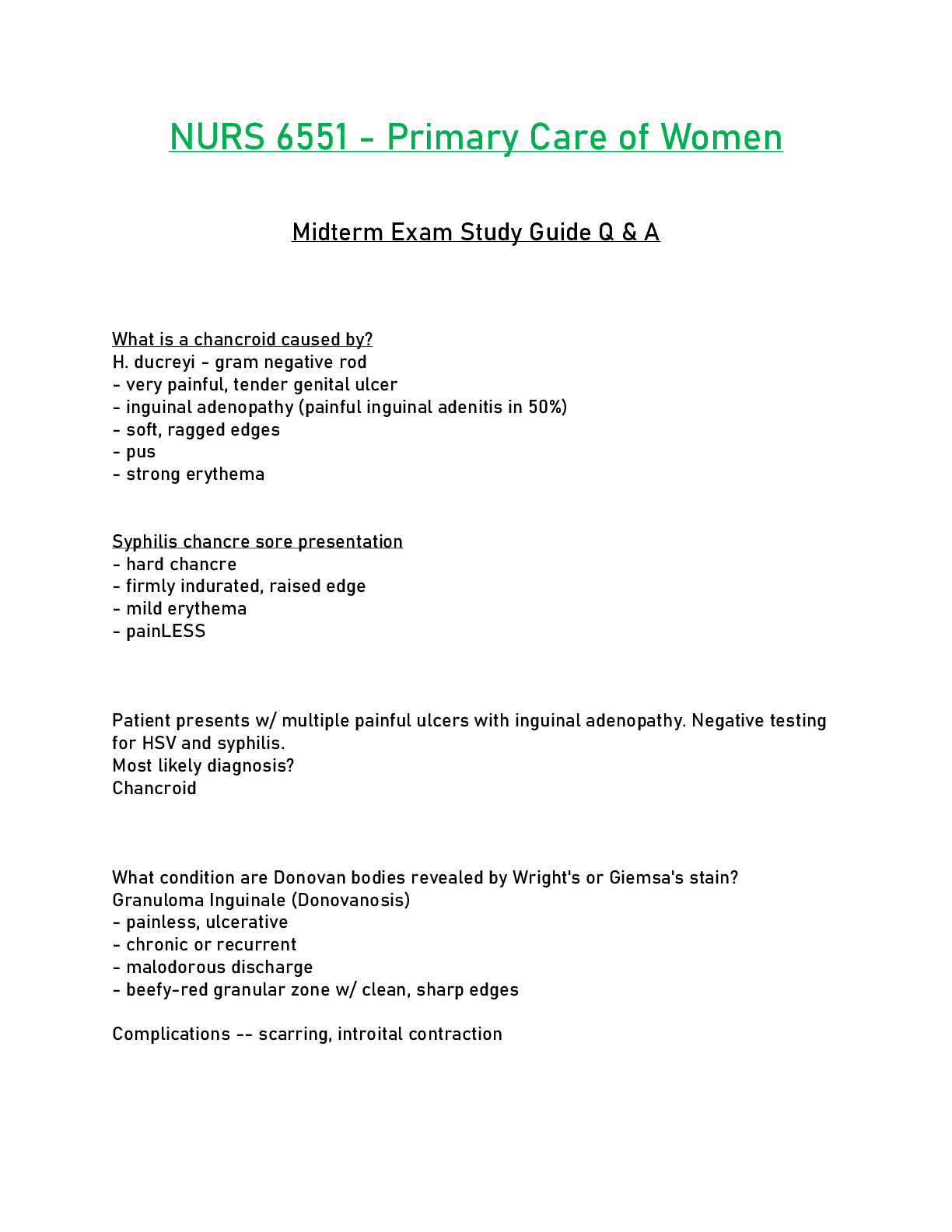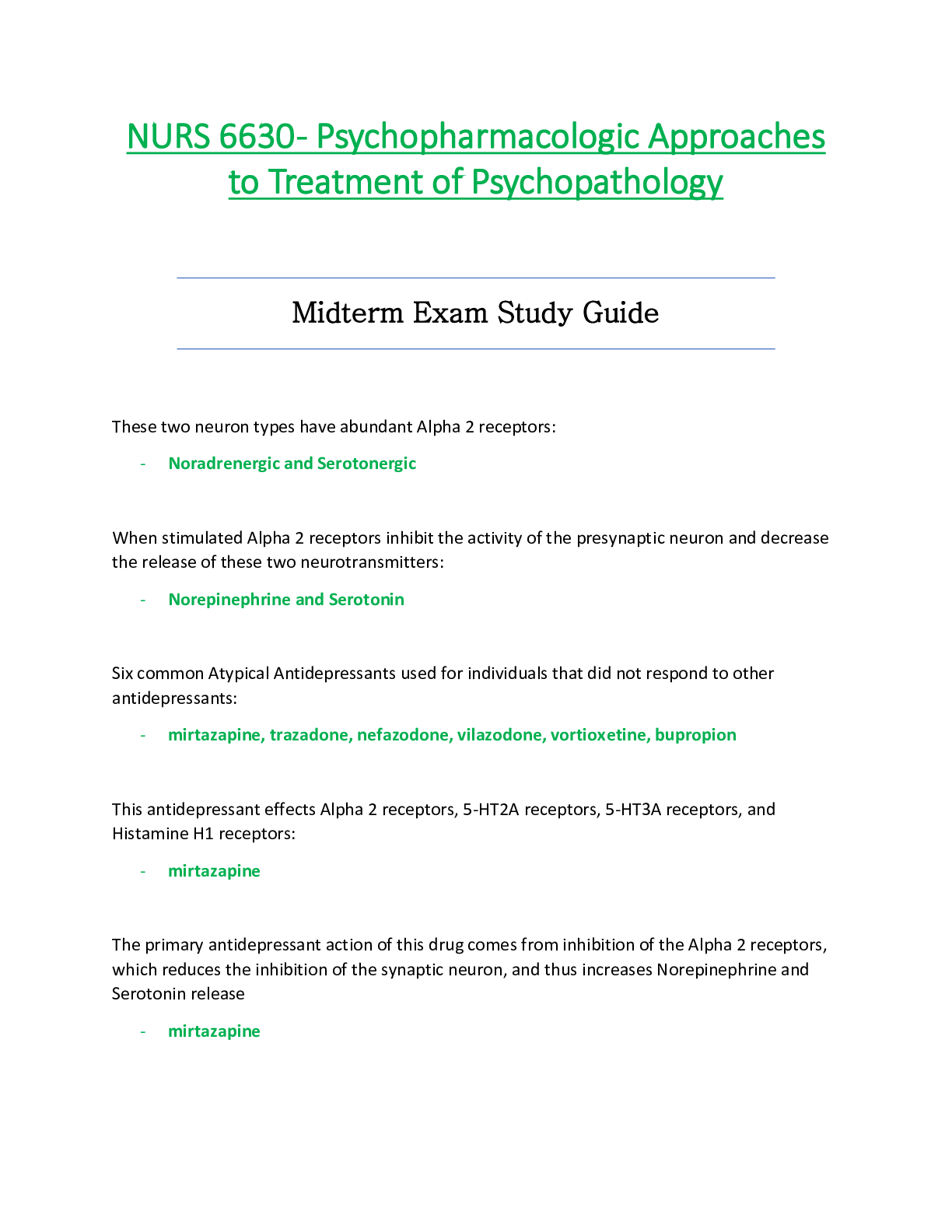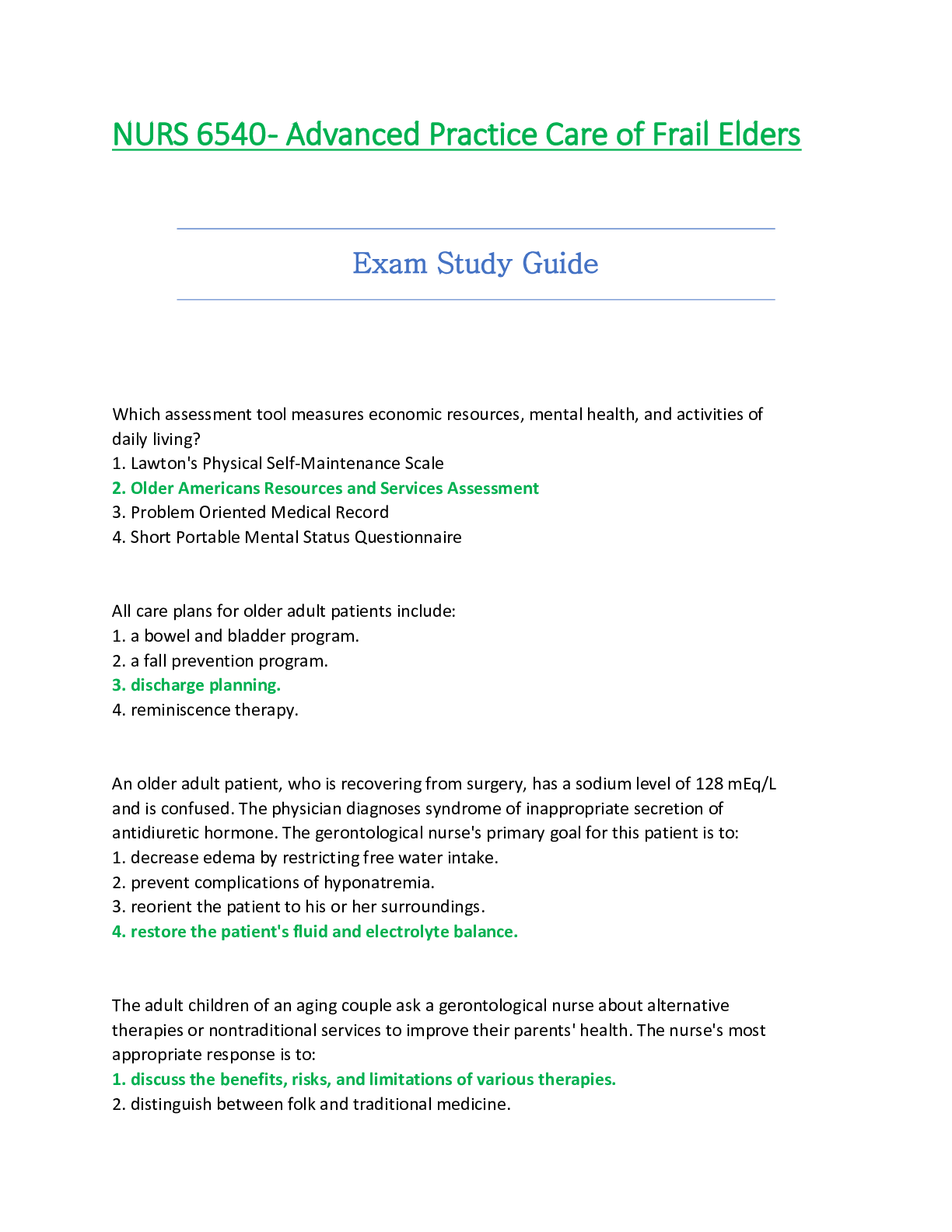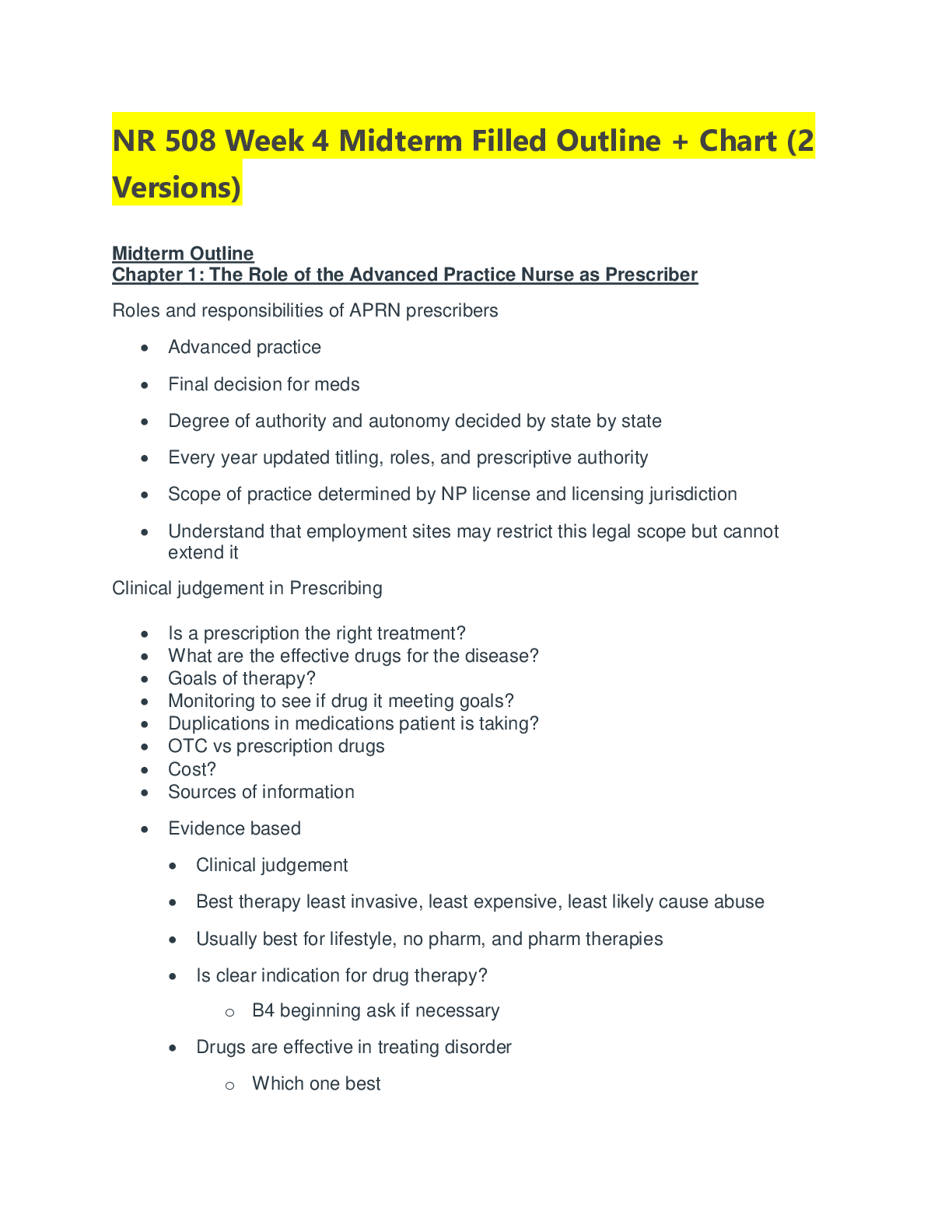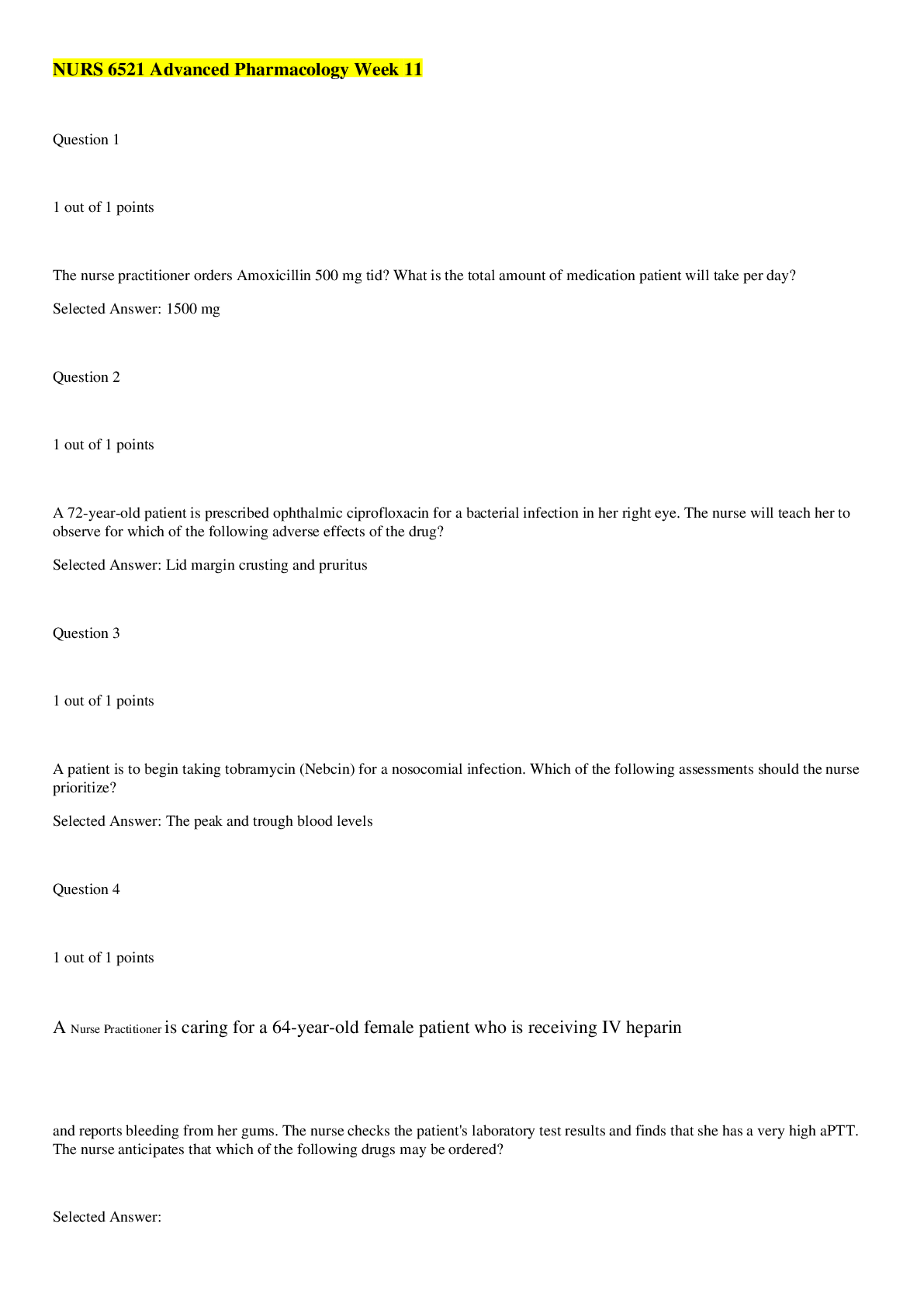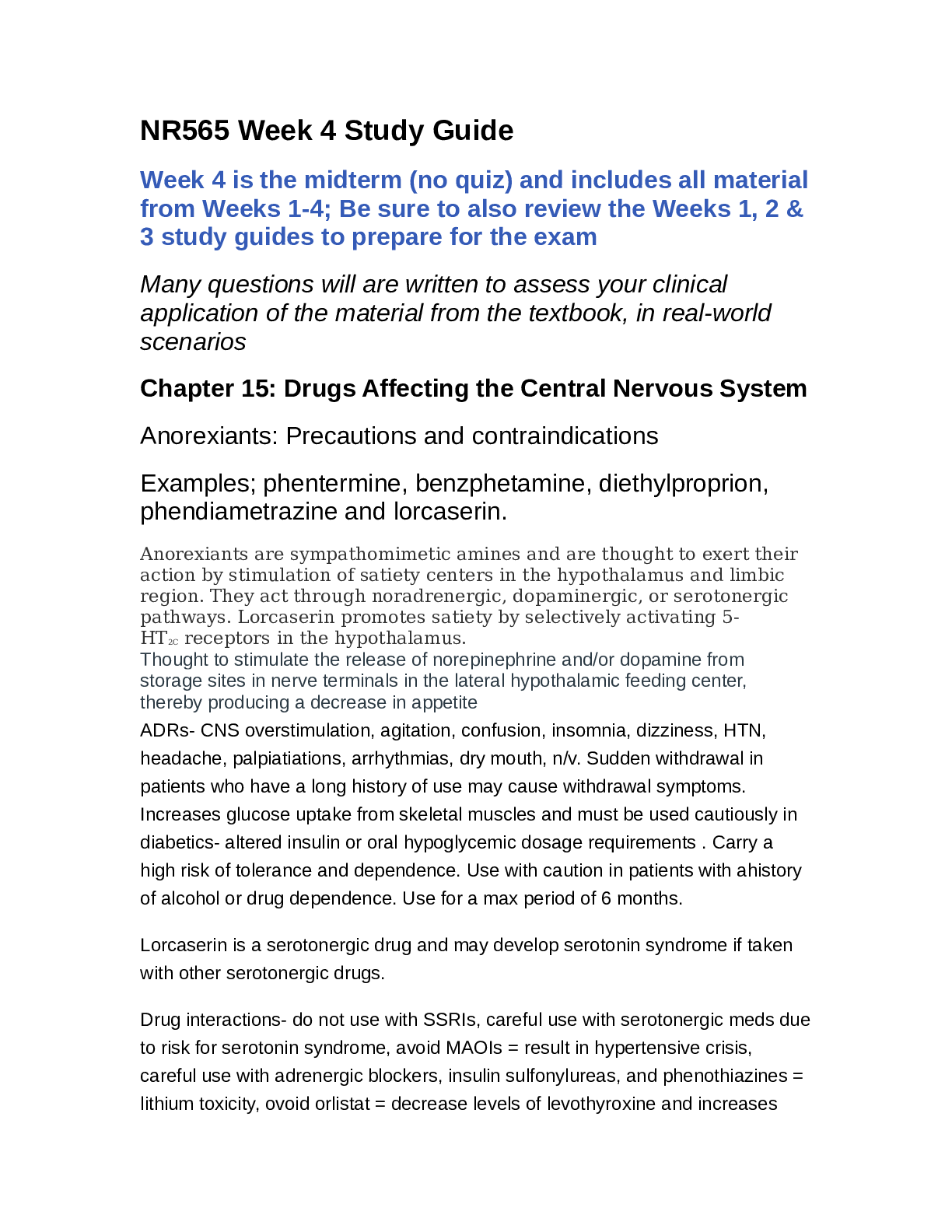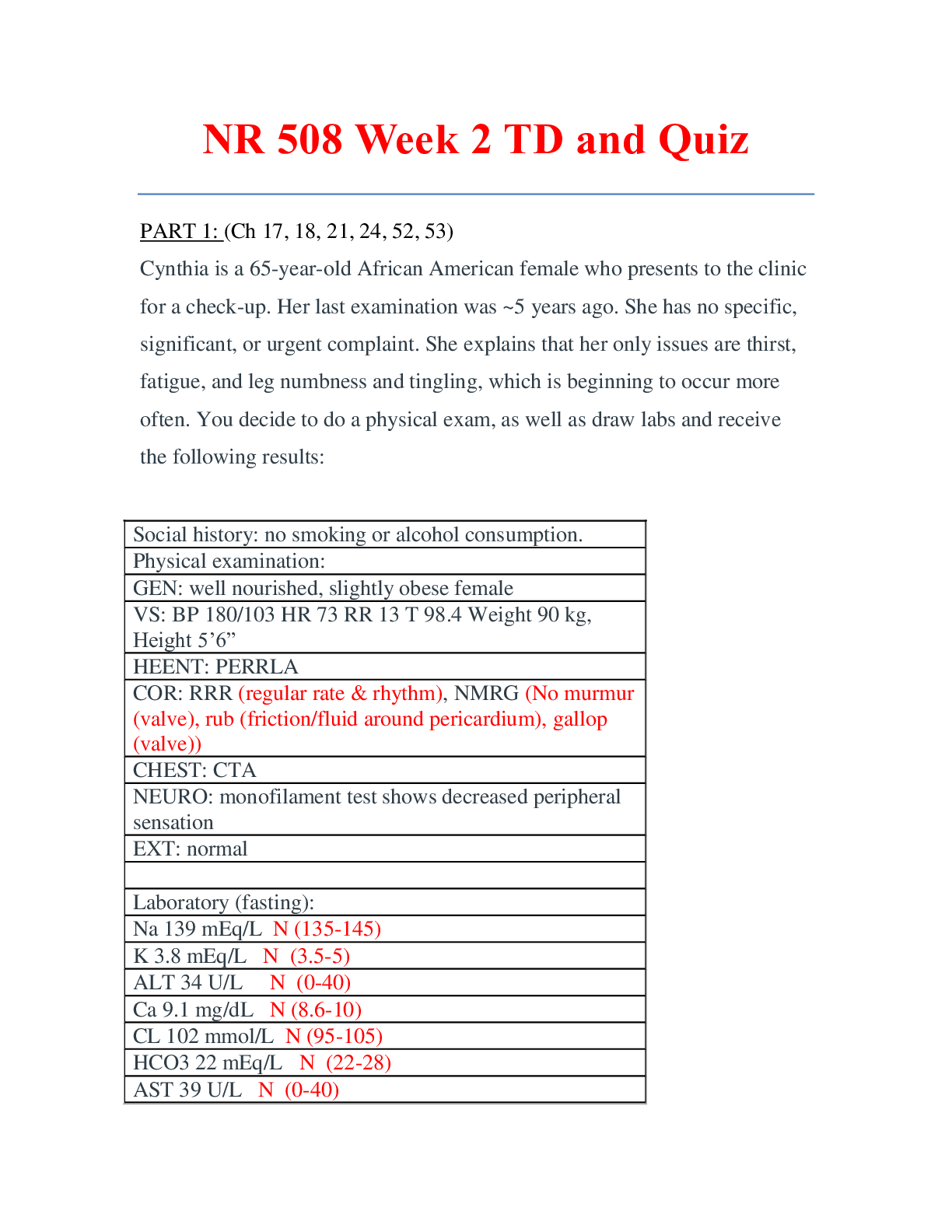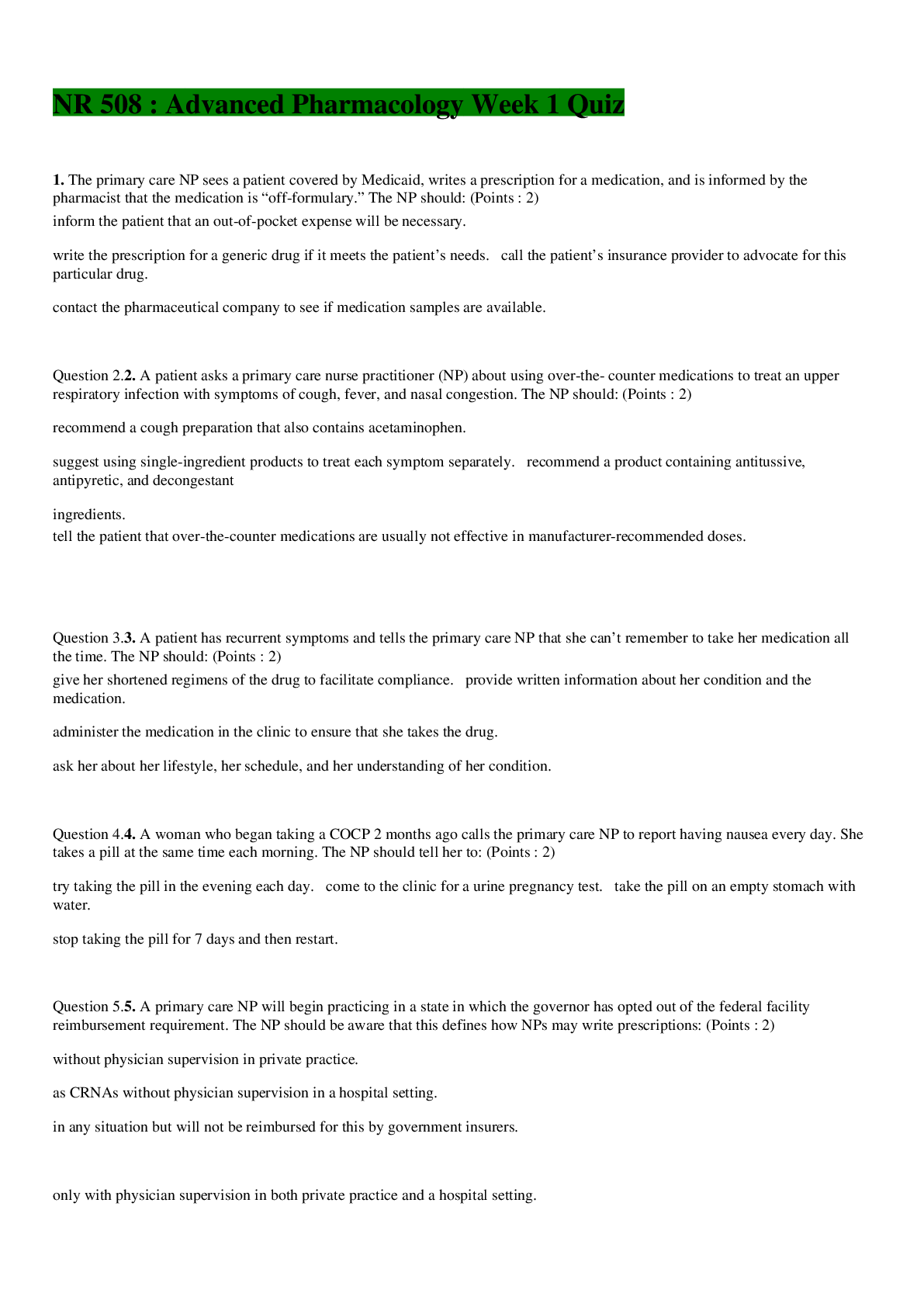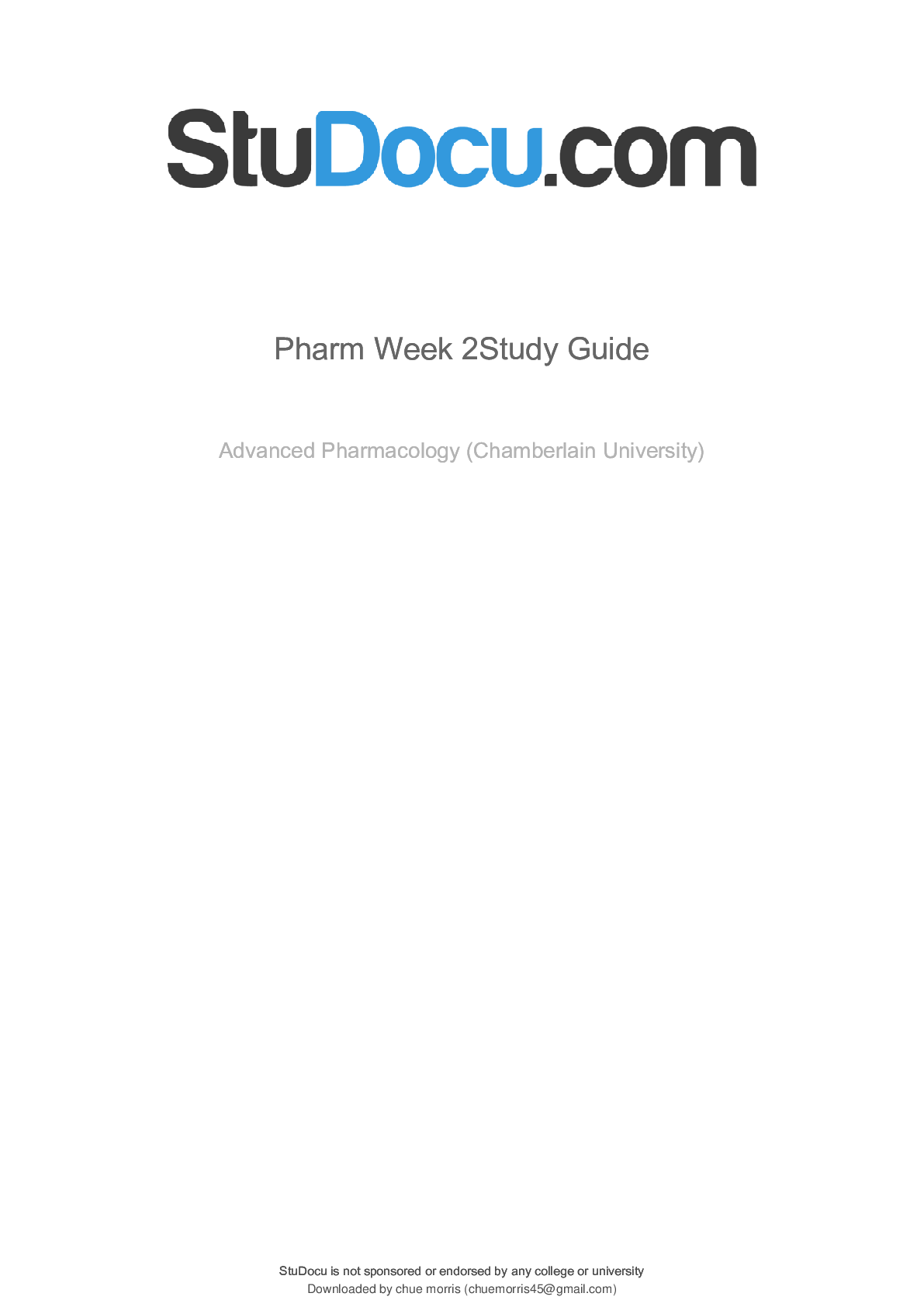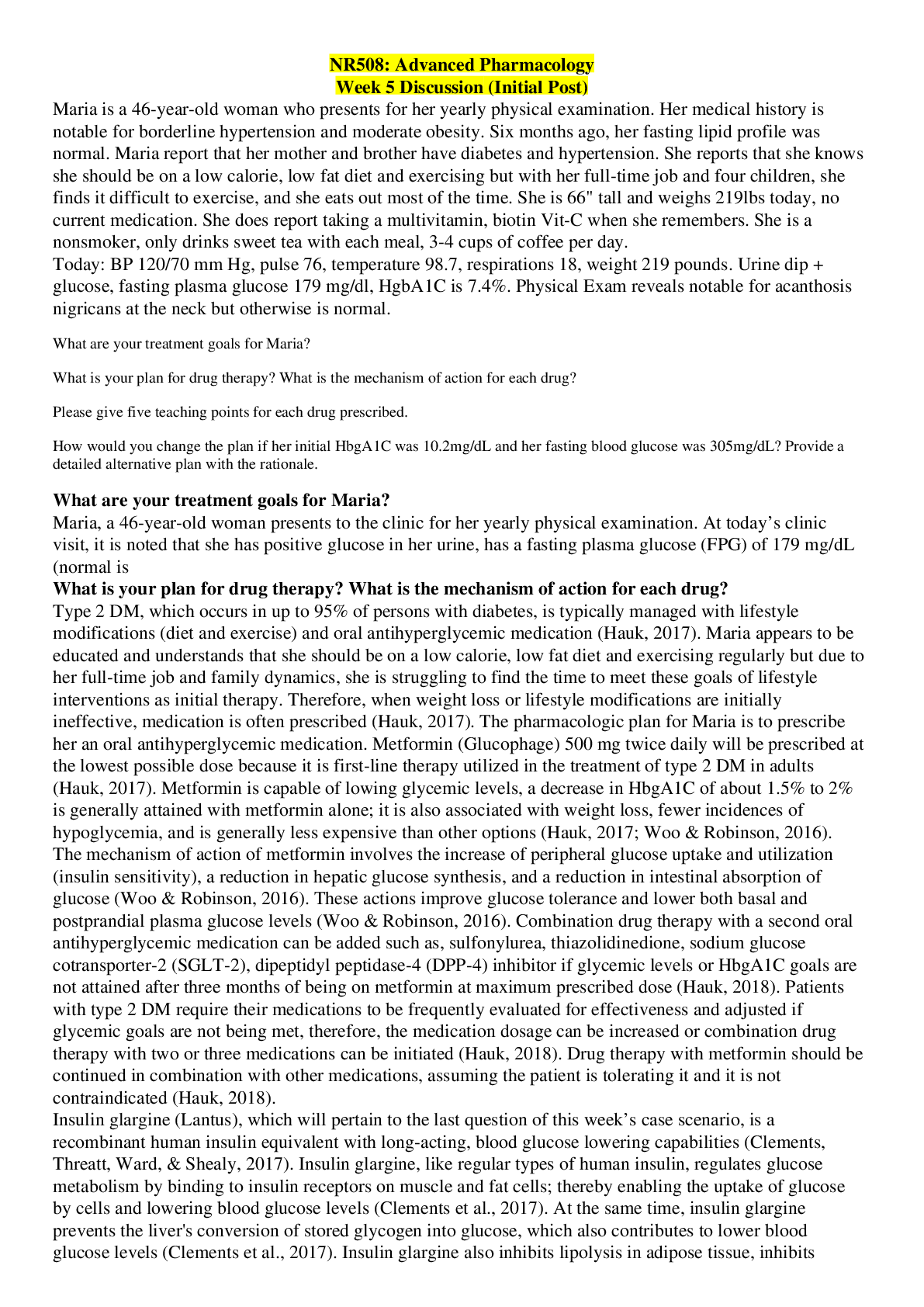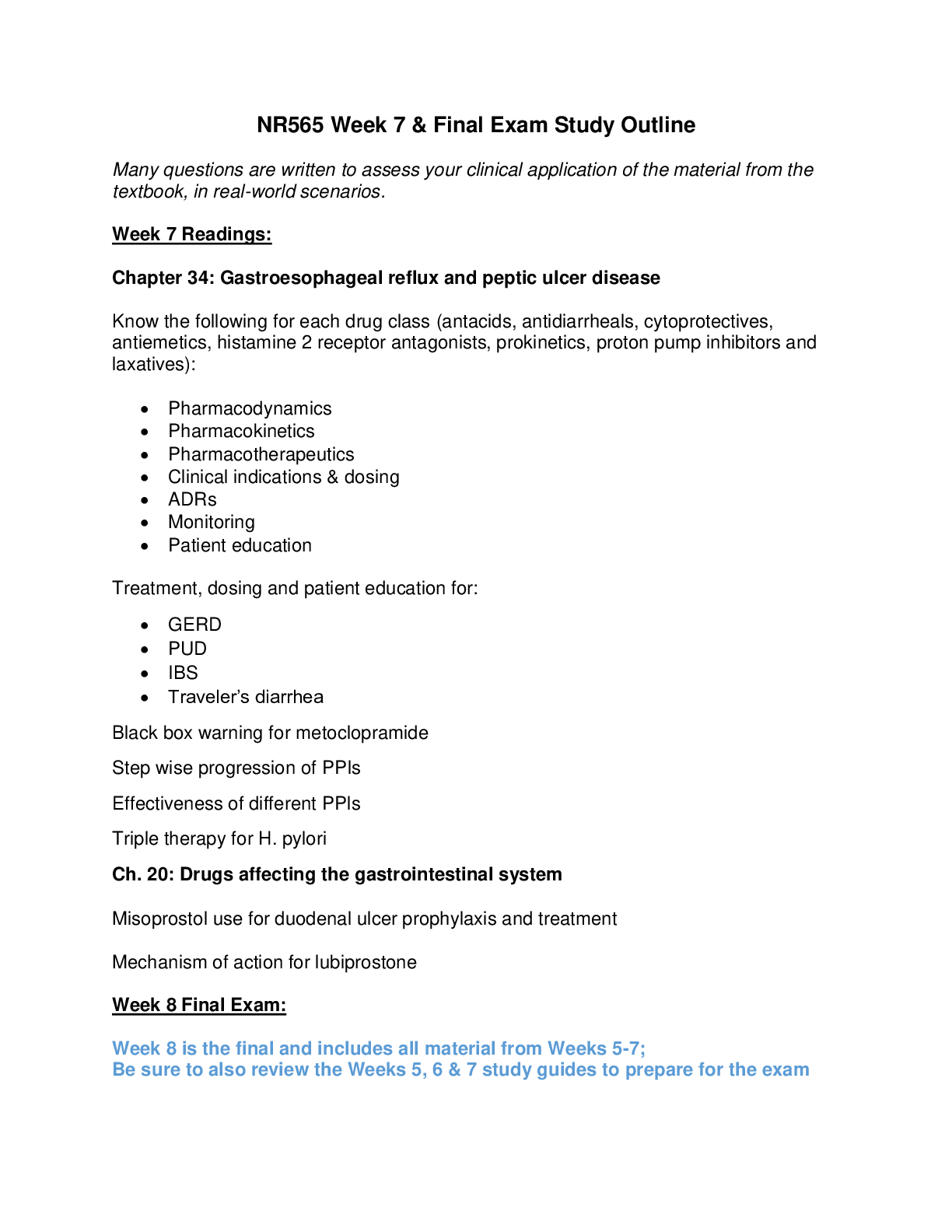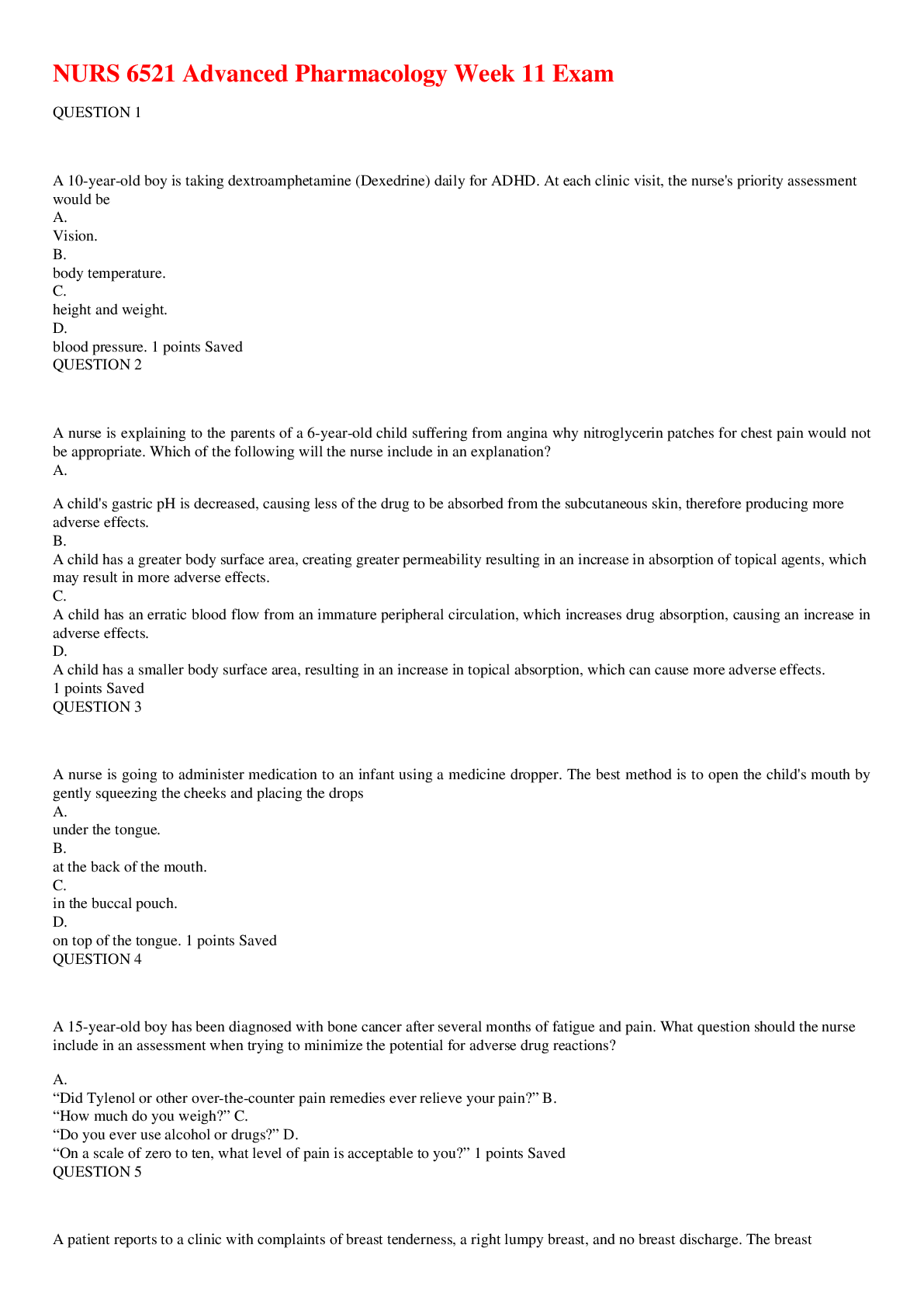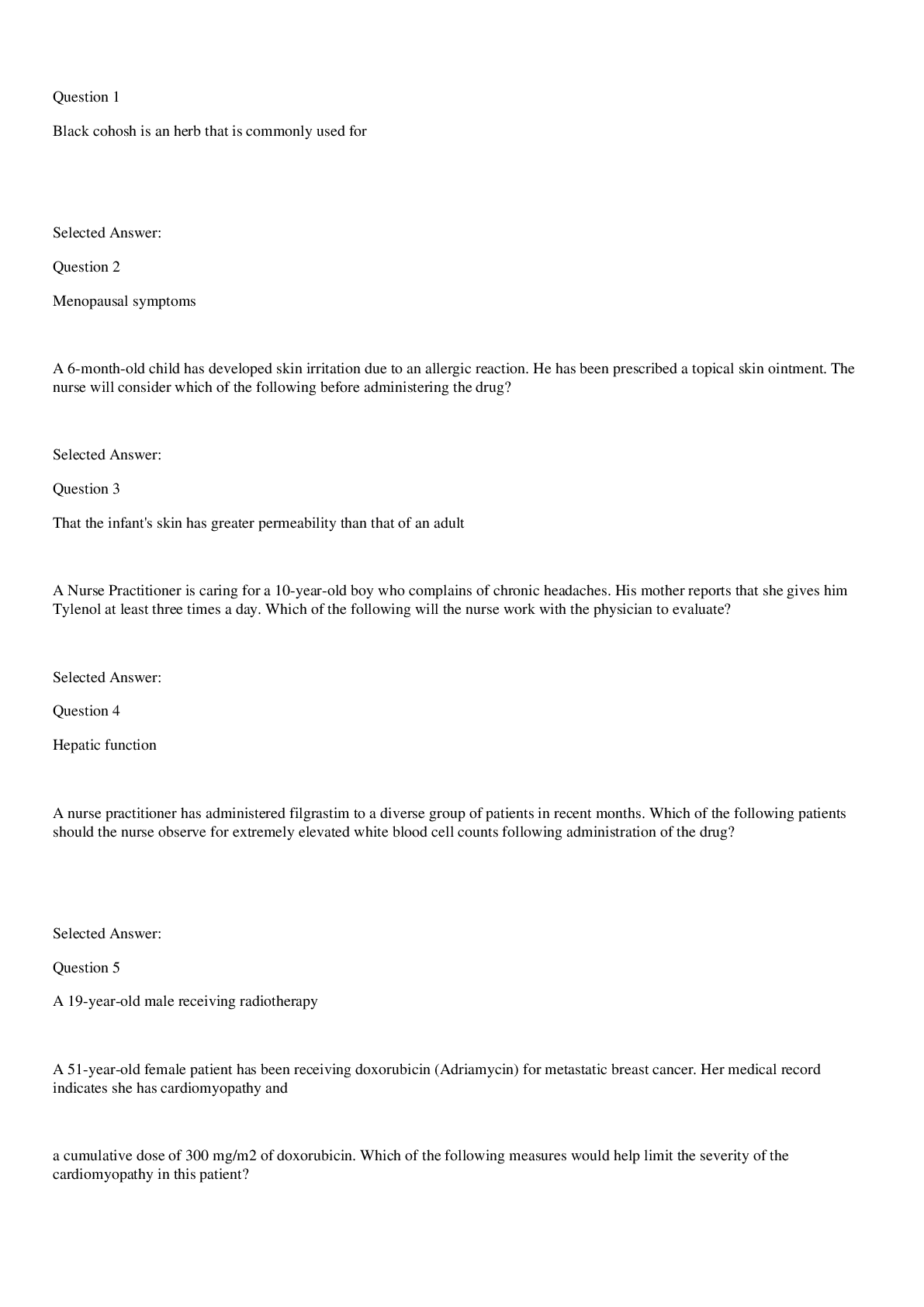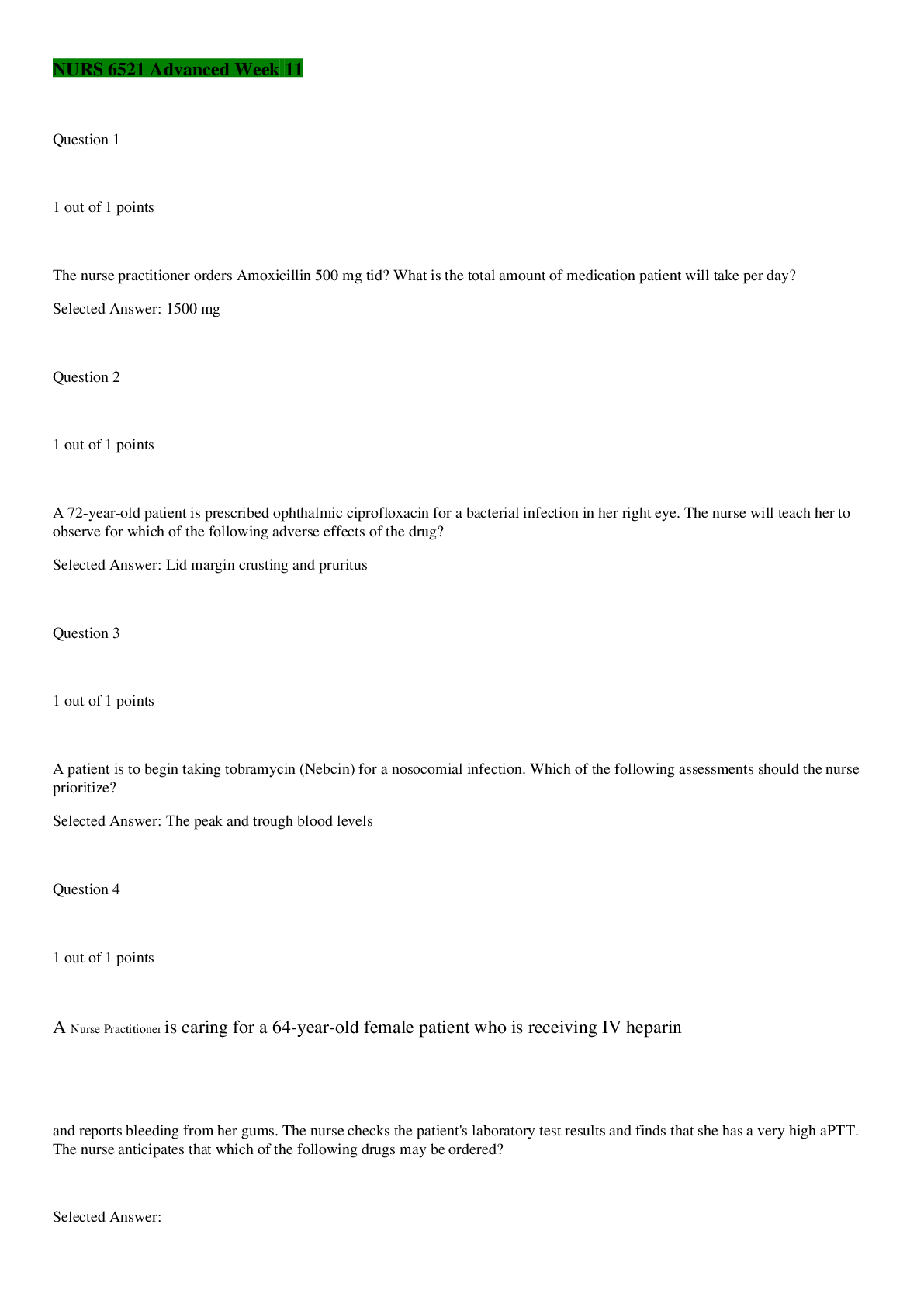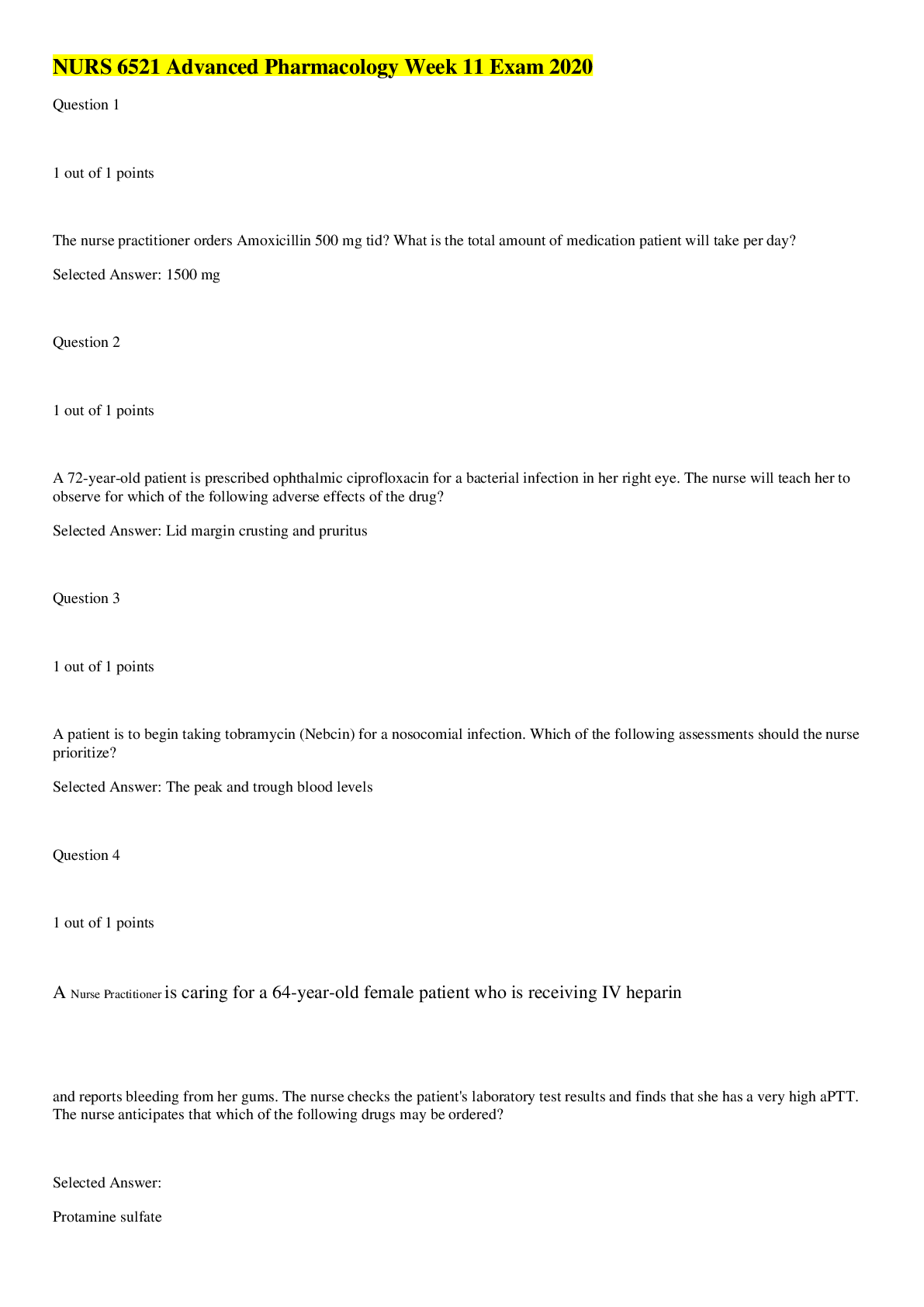*NURSING > STUDY GUIDE > NR 565/NR565 ADVANCED PHARMACOLOGY WEEK 4 STUDY GUIDE(latest) (All)
NR 565/NR565 ADVANCED PHARMACOLOGY WEEK 4 STUDY GUIDE(latest)
Document Content and Description Below
NR565 Week 4 Study Guide Week 4 is the midterm (no quiz) and includes all material from Weeks 1-4; Be sure to also review the Weeks 1, 2 & 3 study guides to prepare for the exam Many questions will ar... e written to assess your clinical application of the material from the textbook, in real-world scenarios Chapter 15: Drugs Affecting the Central Nervous System Anorexiants: Precautions and contraindications Examples; phentermine, benzphetamine, diethylproprion, phendiametrazine and lorcaserin. Anorexiants are sympathomimetic amines and are thought to exert their action by stimulation of satiety centers in the hypothalamus and limbic region. They act through noradrenergic, dopaminergic, or serotonergic pathways. Lorcaserin promotes satiety by selectively activating 5-HT2C receptors in the hypothalamus. Thought to stimulate the release of norepinephrine and/or dopamine from storage sites in nerve terminals in the lateral hypothalamic feeding center, thereby producing a decrease in appetite ADRs- CNS overstimulation, agitation, confusion, insomnia, dizziness, HTN, headache, palpiatiations, arrhythmias, dry mouth, n/v. Sudden withdrawal in patients who have a long history of use may cause withdrawal symptoms. Increases glucose uptake from skeletal muscles and must be used cautiously in diabetics- altered insulin or oral hypoglycemic dosage requirements . Carry a high risk of tolerance and dependence. Use with caution in patients with ahistory of alcohol or drug dependence. Use for a max period of 6 months. Lorcaserin is a serotonergic drug and may develop serotonin syndrome if taken with other serotonergic drugs. Drug interactions- do not use with SSRIs, careful use with serotonergic meds due to risk for serotonin syndrome, avoid MAOIs = result in hypertensive crisis, careful use with adrenergic blockers, insulin sulfonylureas, and phenothiazines = lithium toxicity, ovoid orlistat = decrease levels of levothyroxine and increases warfarin in the body. Anticonvulsants: Hydantoins, iminostilbenes, succinimides Mode of Action: Essentially, anti-seizure drugs act by stimulating an influx of chloride ions; usually this is associated with the neurotransmitter gamma-aminobutyric acid delaying an influx of sodium and delaying an influx of calcium. • Hydantoins; phenytoin, ethotoin, fosphenytoin – first line tx for tonic-clonic and complex seizures and are least sedating drugs for seizure tx. Hydantoins inhibit and stabilize electrical discharges in the motor cortex of the brain by affecting the influx of sodium ions into the neuron during depolarization and repolarization, slowing the propagation and spread of abnormal discharges. They also affect the brainstem's contribution to grand mal seizures and have antiarrhymic properties. • Metabolism and excretion Metabolism of hydantoins takes place in the liver; excretion, via the kidneys. Plasma half-lives range from 6 to 24 hours. Precautions and Contraindications Hydantoins are contraindicated under conditions of hypersensitivity. Phenytoin-induced hepatitis is a common hypersensitivity reaction. Other hypersensitivity reactions include fever, rash, arthralgias, and lymphadenopathy. Phenytoin may cause severe cardiovascular events and death has resulted from too-rapid IV administration. Phenytoin has a Black-Box Warning that IV administration should not exceed 50 mg/minute in adults and 1 to 3 mg/kg/minute in pediatric patients owing to risk of cardiovascular reactions associated with a too rapid rate of administration. Phenytoin is contraindicated in sinus bradycardia, sinoatrial block, second- and third-degree atrioventricular block, and Stokes–Adams syndrome. It should be used cautiously in patients with hepatic or renal disease. Ethotoin is contraindicated in the presence of hepatic or hematological disorders. Black box warning for IV administrations – do not give too fast or can cause cardiovascular reactions. • MOAs, indications • Absolute contraindications - bradycardian sinoatrial block, second and third degree atrioventricular block and stokes-adams syndrome. • Precautions - in pregnant wormen – can cause defects and low vitamin K, in patients w low liver function (may have signs of toxicity at low levels of drug), caution in patient with myocardial insufficiency and hypotension. • Monitoring Patients should be [Show More]
Last updated: 1 year ago
Preview 1 out of 11 pages
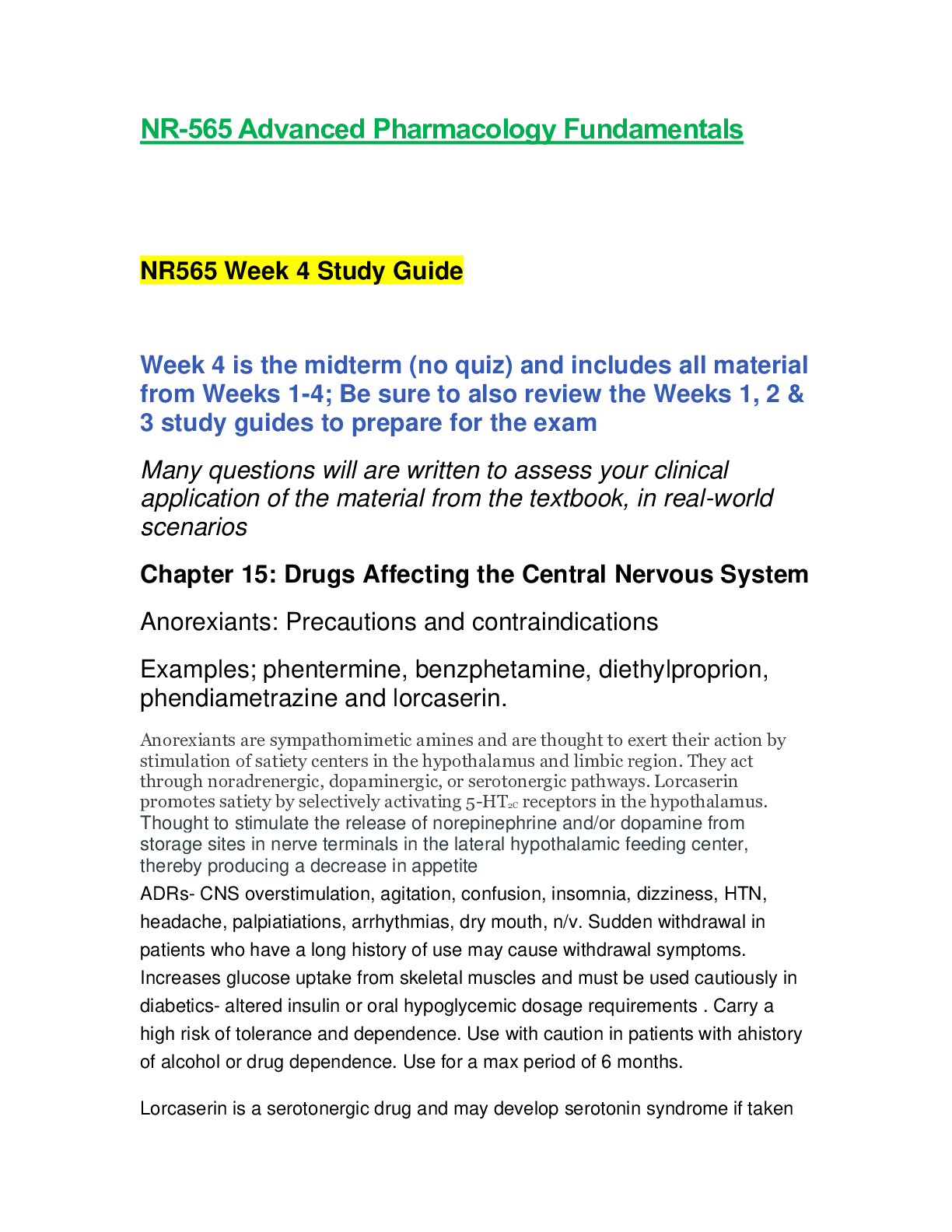
Reviews( 0 )
Document information
Connected school, study & course
About the document
Uploaded On
Dec 02, 2020
Number of pages
11
Written in
Additional information
This document has been written for:
Uploaded
Dec 02, 2020
Downloads
0
Views
43

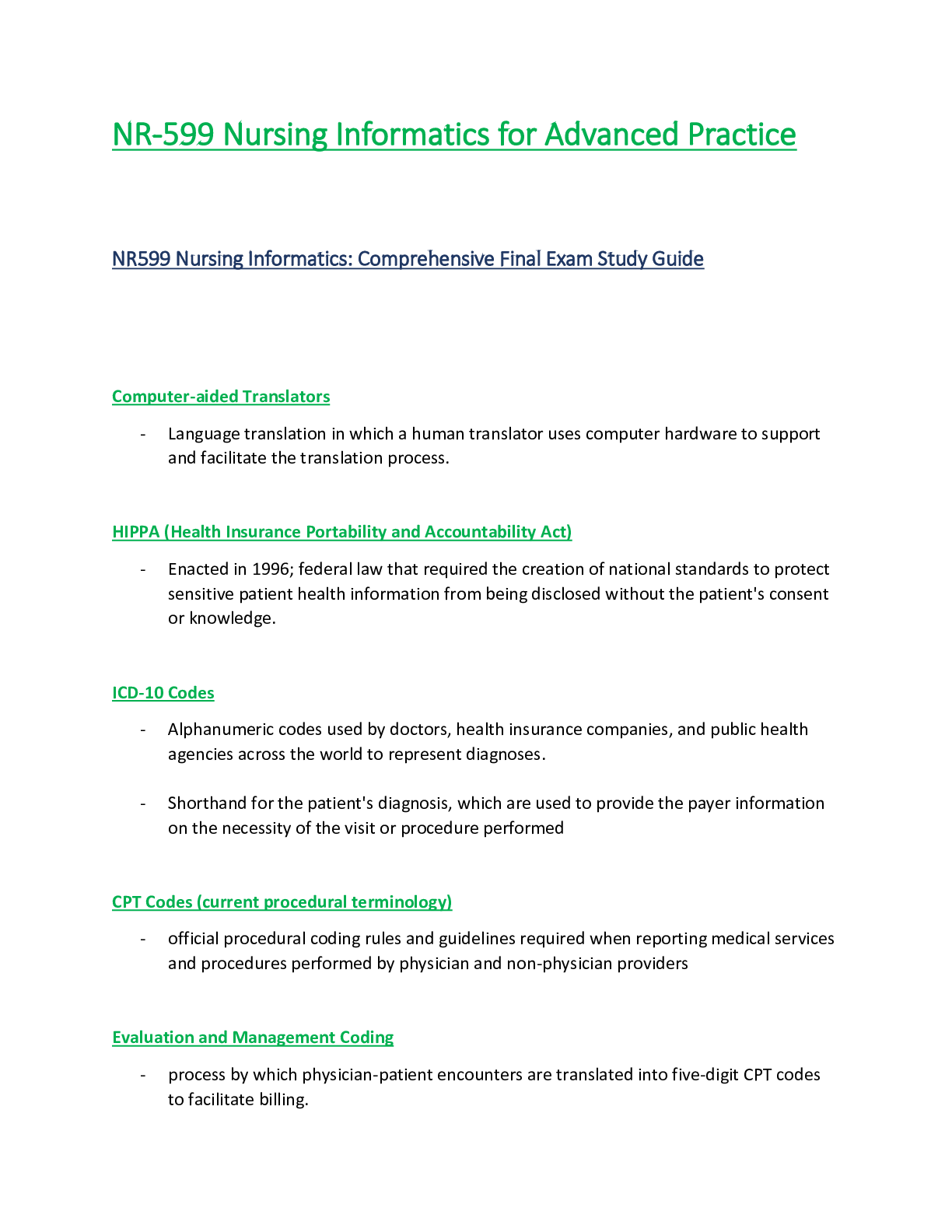
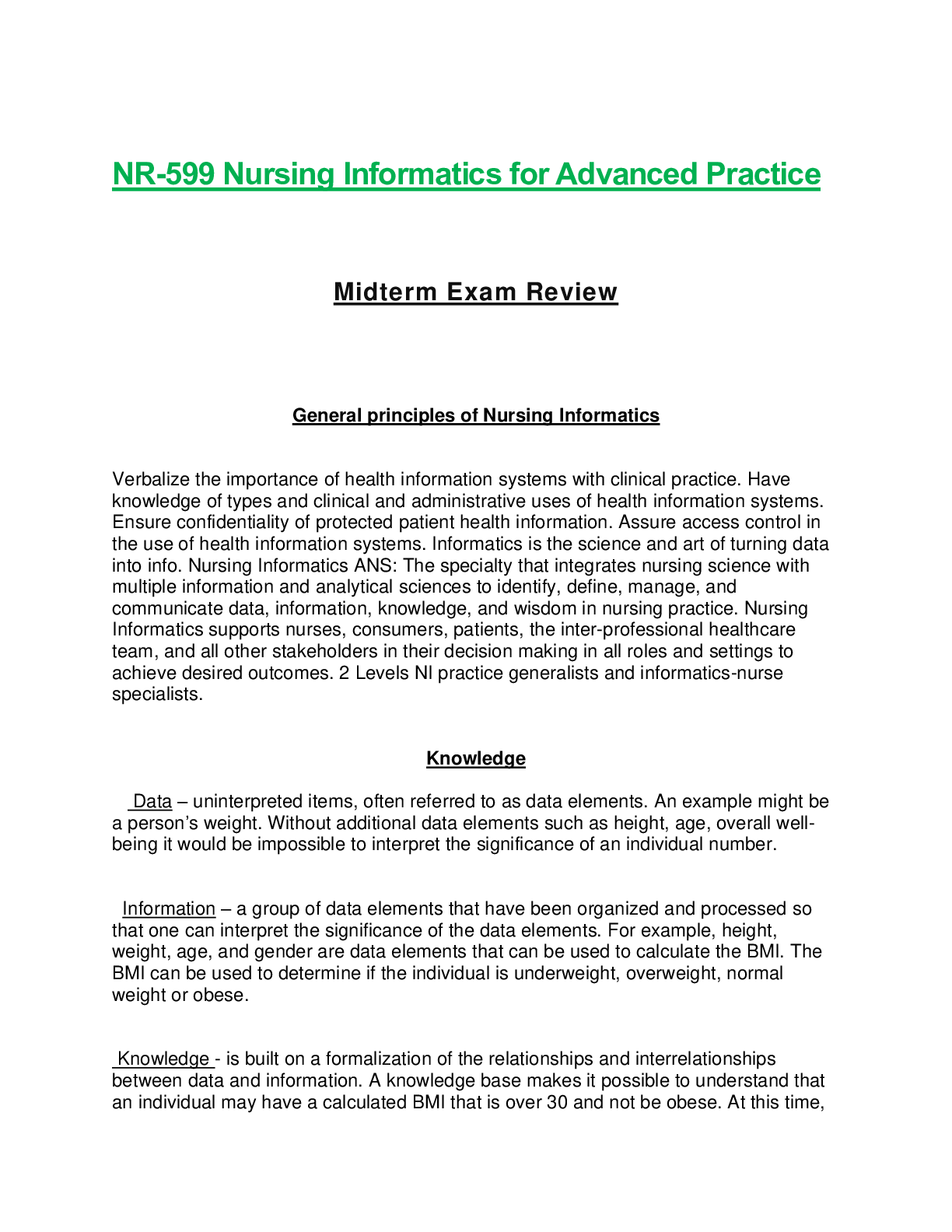
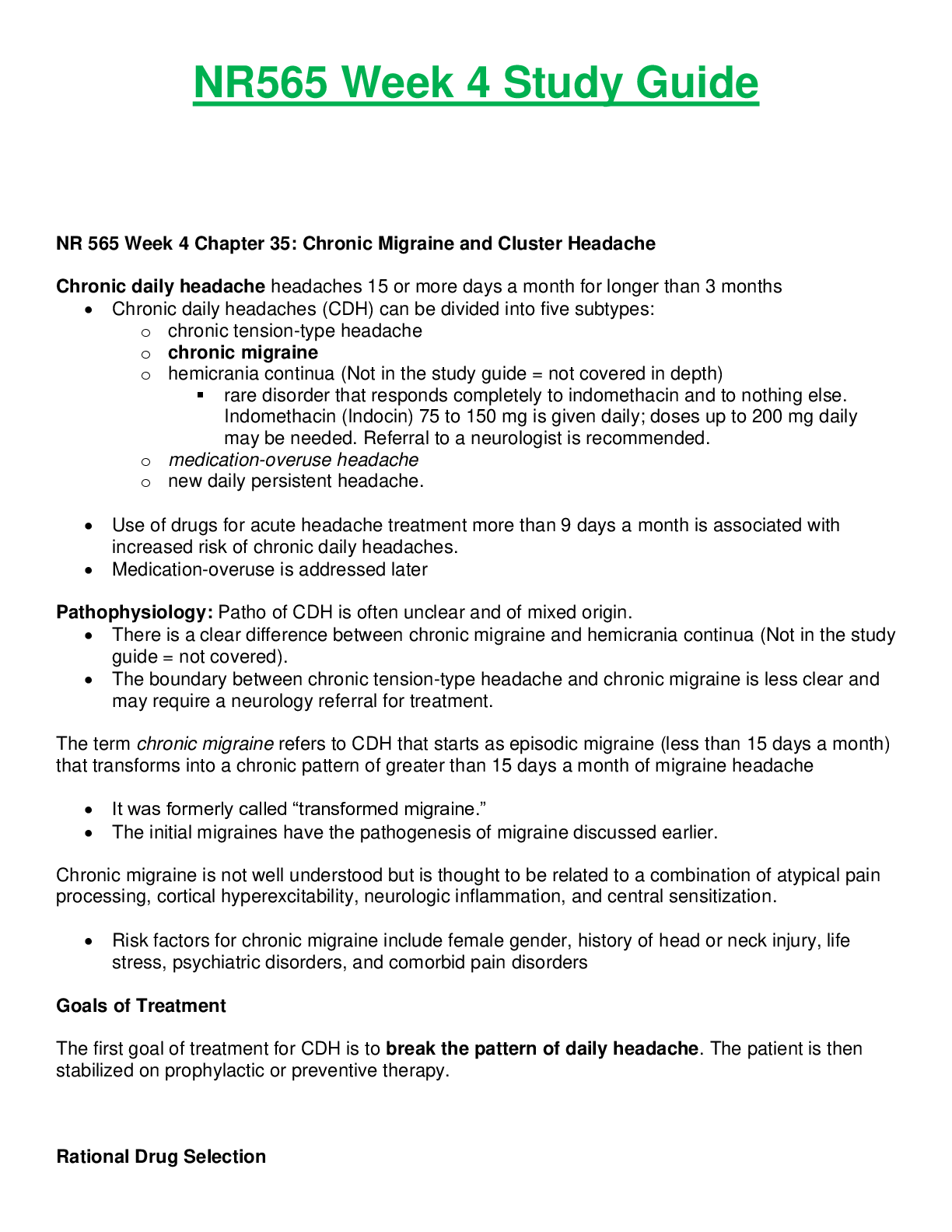
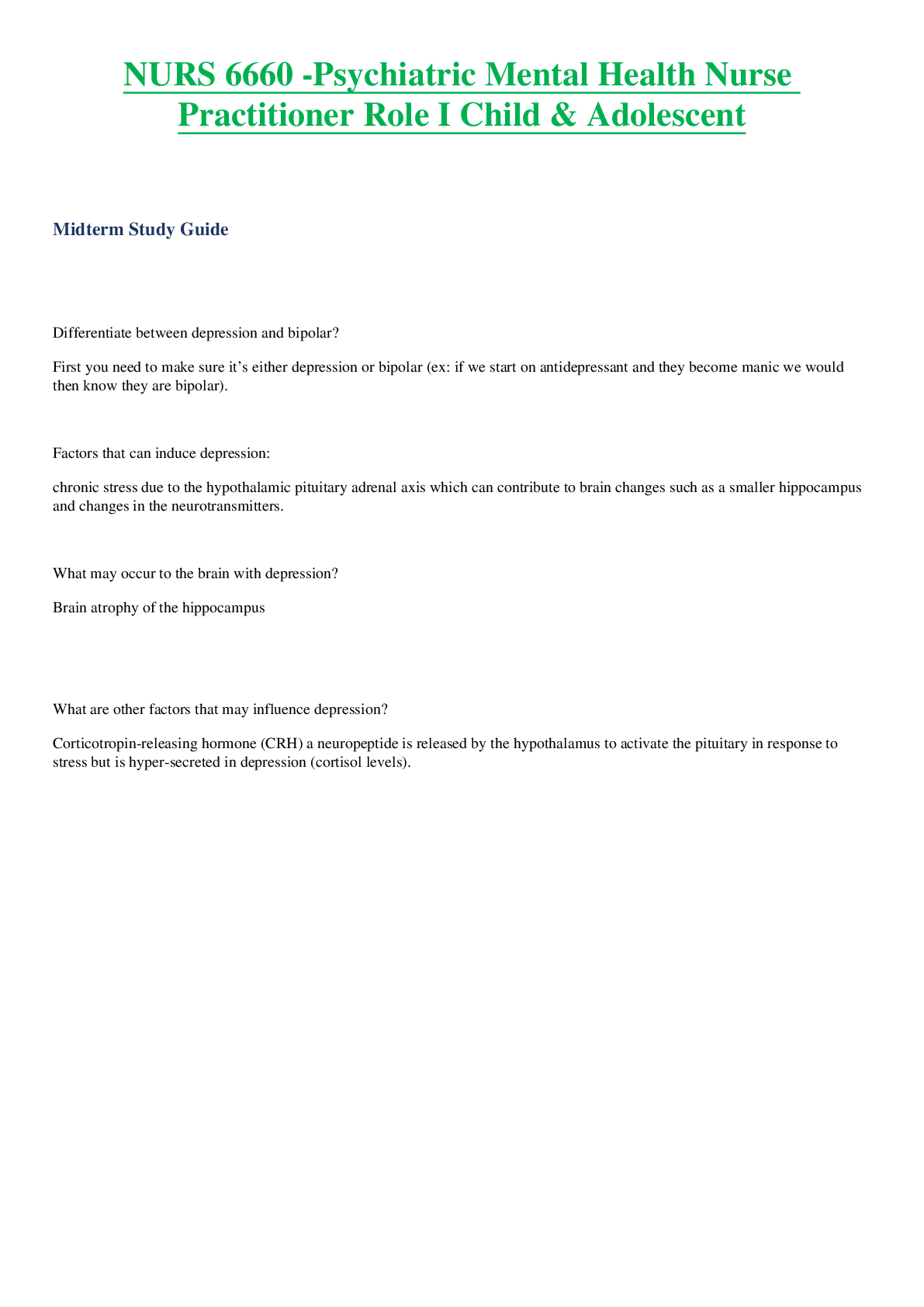
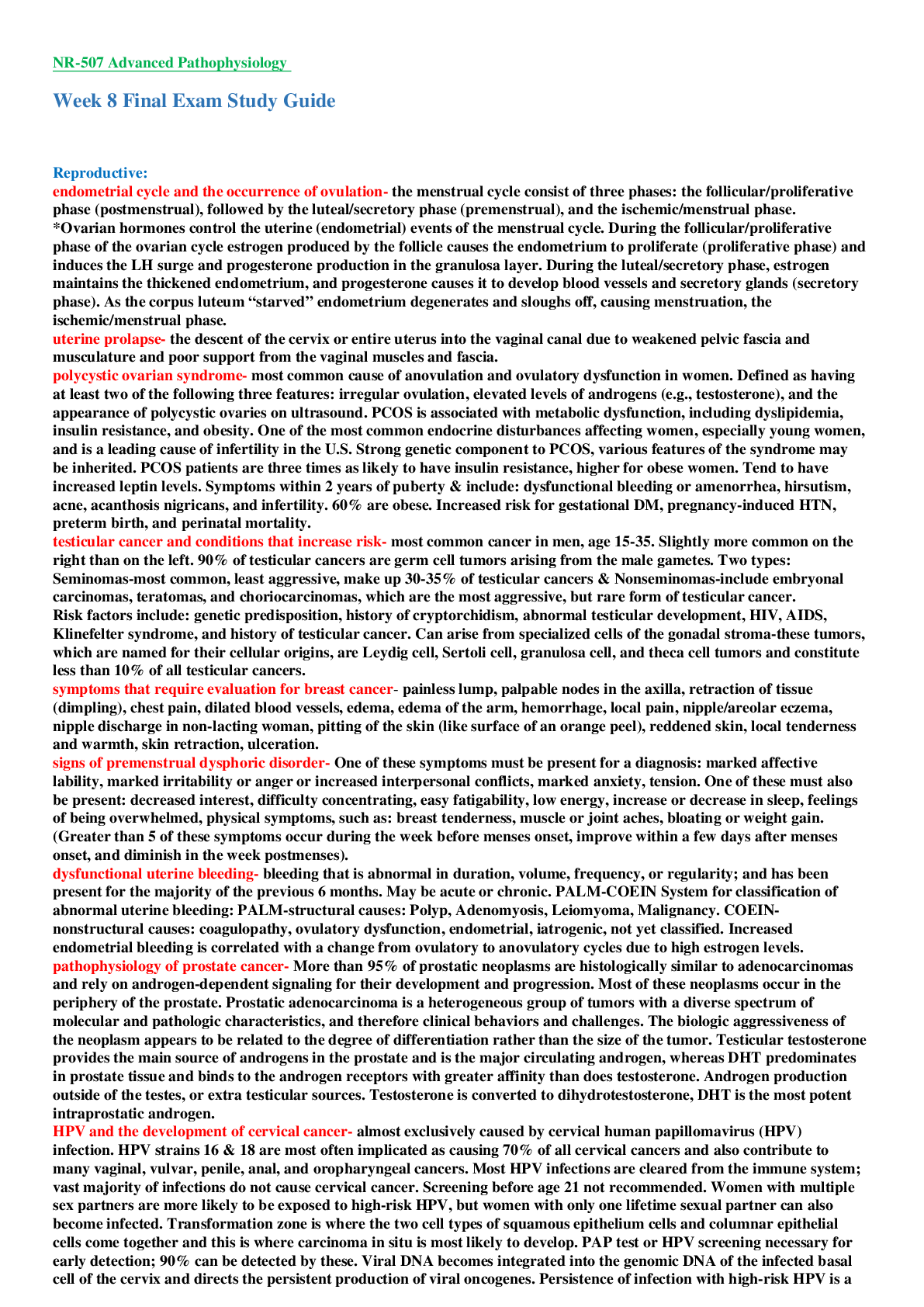
.png)
